 We've covered advanced commenting systems for Wordpress before, but what about those bloggers who want to use the stock WordPress commenting system?
Not everyone wants to manage a third-party comment system. And those are the users who will find the comment plugins below really useful.
Below are eleven plugins that can handle everything from adding tweets about your posts to your comments section to stripping out potentially malicious code to preventing spam comments.
There are also plugins that help increase user engagement and usability for your commenters. Let us know in the comments what your favorite comment-related WP plugins are, whether they made the list or not!
We've covered advanced commenting systems for Wordpress before, but what about those bloggers who want to use the stock WordPress commenting system?
Not everyone wants to manage a third-party comment system. And those are the users who will find the comment plugins below really useful.
Below are eleven plugins that can handle everything from adding tweets about your posts to your comments section to stripping out potentially malicious code to preventing spam comments.
There are also plugins that help increase user engagement and usability for your commenters. Let us know in the comments what your favorite comment-related WP plugins are, whether they made the list or not!
1. Twitter Mentions as Comments
As social media continues to grow, a lot of conversations surrounding blog content aren't happening on the originating blogs. They're happening on Twitter, Facebook, Google+, and elsewhere. And while it's great to have people sharing and discussing your content with their social networks, it can sometimes make your blog comments section look anemic. Twitter Mentions as Comments brings the conversation from Twitter back to your blog. It uses Twitter's search API to find people linking to your posts and then inserts their tweets alongside your comments (using your blog's existing comment filters), effectively making Twitter an extension of your blog.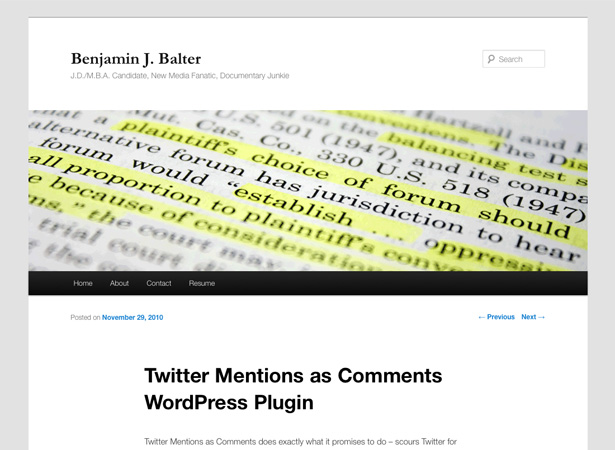
2. WTC Comment Cleaner
This plugin strips potentially malicious code from your blog comments. Just specify what tags you want to allow, and WTC Comment Cleaner will remove all other tags, enhancing security on your blog. It's currently compatible up through WP 3.2.1.3. Comment Timeout
Comment Timeout closes comments on posts after a configurable period of time. But in addition to that, you can customize it to allow the open discussion period to extend beyond the default settings if there are recent approved comments on a post, or override comment closing on a post-by-post basis. This way, if there's still an active discussion surrounding a post, comments can be left open indefinitely.4. Impostercide
A lot of blogs opt to hold any comments for moderation until a user has had at least one comment approved. And that's a great idea until some spammer figures out the email address of someone with an approved comment on your blog and overrides your moderation policy by entering an inauthentic email address. Impostercide solves this problem by preventing unauthenticated users from posting a comment with a registered user's email address.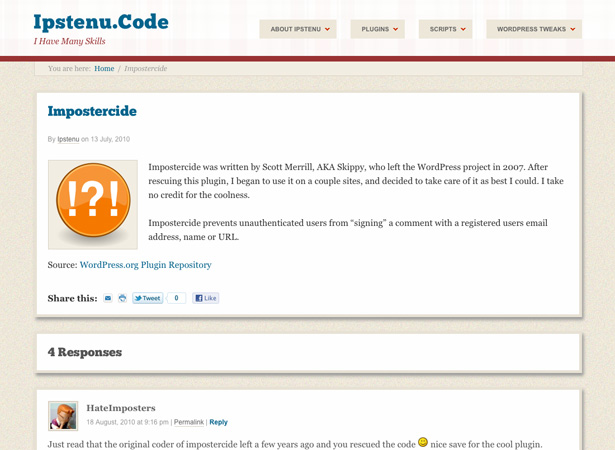
5. Sticky Comments
Sticky posts have been around in WP for quite awhile, either accomplished by plugins or themes. But what about Sticky Comments? Maybe you want to put a comment you've written yourself at the top of your comments list to further clarify something. Or maybe a regular commenter on your blog has provided some kind of valuable insight. This plugin lets you make their comment sticky, so it sits at the top of the comments list. It also lets you re-order comments to either newest first or oldest first.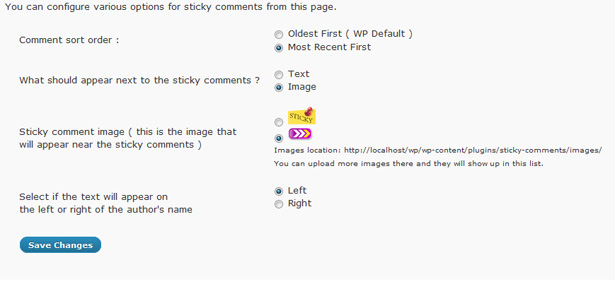
6. Live Comment Preview
Live Comment Preview lets a visitor see how their comment will appear as they type into the comment box. It uses client-side JavaScript only (not Ajax), and even strips disallowed HTML tags from the comment in the preview. No configuration is required.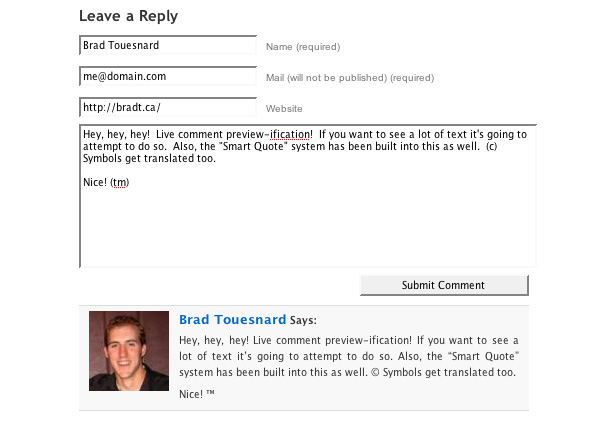
7. Minimum Comment Length
How sick are you of getting one- or two-word comments on your blog? "Thanks" or "Great post" do nothing to add to the conversation and can even make your blog look spammy. Minimum Comment Length can prevent those kinds of comments and require your commenters to leave something a bit more substantial. If they leave a comment that's too short, WordPress will give them a friendly error message letting them know that, and asking them to leave something more useful.
8. Conditional CAPTCHA
CAPTCHA codes, while useful for spam filtering, are a big usability issue. At the same time, though, on blogs with tons of comments, it can be the most effective way to weed out spam. Conditional CAPTCHA helps solve that problem. If a comment is potentially spam (based on either Akismet or TypePad AntiSpam), the commenter will be shown a CAPTCHA code. If they don't enter it correctly, their comment is automatically discarded or trashed, keeping your spam queue less cluttered. If they do enter it correctly, you can choose to either have their comment added to the spam queue or be approved immediately.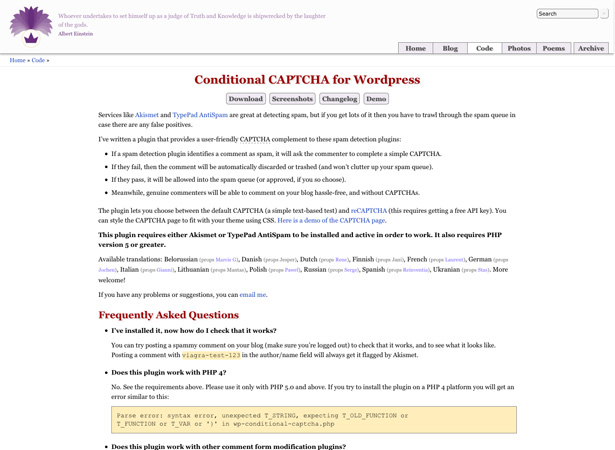
9. One Click Close Comments
Being able to open or close comments on a post is built into WordPress. But you have to go into each individual post to do so. What if you want to close comments on a bunch of posts (or re-open them)? One Click Close Comments allows you to open or close comments right from the post listing in the dashboard.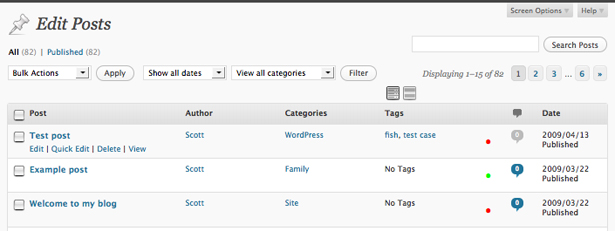
10. Thank Me Later
It's a nice touch to email new commenters on your blog. Thank Me Later automates the process and automatically sends an email to thank those who comment on your blog. This can help increase engagement and make your visitors feel appreciated and valued.
11. Comment E-Mail Verification
With Comment E-Mail Verification, if a comment is held for moderation, an email is sent to the comment author with a verification link. Once the link is clicked on, the comment is automatically approved, greatly reducing spam comments. It's also possible to set the comments to be held in moderation even after the link is clicked, if you prefer to still manually verify. Regardless of what your comment management needs are, there's almost certainly a plugin out there that can help you.
The WordPress plugins directory alone has over 800 plugins tagged with "comments" (just make sure you check that they're compatible with your version of WP). And that doesn't include all the premium plugins out there.
What comment plugins do you use on your blog? Would you recommend them? Let us know in the comments!
Regardless of what your comment management needs are, there's almost certainly a plugin out there that can help you.
The WordPress plugins directory alone has over 800 plugins tagged with "comments" (just make sure you check that they're compatible with your version of WP). And that doesn't include all the premium plugins out there.
What comment plugins do you use on your blog? Would you recommend them? Let us know in the comments!
Read Next
15 Best New Fonts, July 2024
Welcome to our monthly roundup of the best fonts we’ve found online in the last four weeks. This month, there are fewer…
By Ben Moss
20 Best New Websites, July 2024
Welcome to July’s round up of websites to inspire you. This month’s collection ranges from the most stripped-back…
Top 7 WordPress Plugins for 2024: Enhance Your Site's Performance
WordPress is a hands-down favorite of website designers and developers. Renowned for its flexibility and ease of use,…
By WDD Staff
Exciting New Tools for Designers, July 2024
Welcome to this July’s collection of tools, gathered from around the web over the past month. We hope you’ll find…
3 Essential Design Trends, July 2024
Add some summer sizzle to your design projects with trendy website elements. Learn what's trending and how to use these…
15 Best New Fonts, June 2024
Welcome to our roundup of the best new fonts we’ve found online in the last month. This month, there are notably fewer…
By Ben Moss
20 Best New Websites, June 2024
Arranging content in an easily accessible way is the backbone of any user-friendly website. A good website will present…
Exciting New Tools for Designers, June 2024
In this month’s roundup of the best tools for web designers and developers, we’ll explore a range of new and noteworthy…
3 Essential Design Trends, June 2024
Summer is off to a fun start with some highly dramatic website design trends showing up in projects. Let's dive in!
15 Best New Fonts, May 2024
In this month’s edition, there are lots of historically-inspired typefaces, more of the growing trend for French…
By Ben Moss
How to Reduce The Carbon Footprint of Your Website
On average, a web page produces 4.61 grams of CO2 for every page view; for whole sites, that amounts to hundreds of KG…
By Simon Sterne
20 Best New Websites, May 2024
Welcome to May’s compilation of the best sites on the web. This month we’re focused on color for younger humans,…














